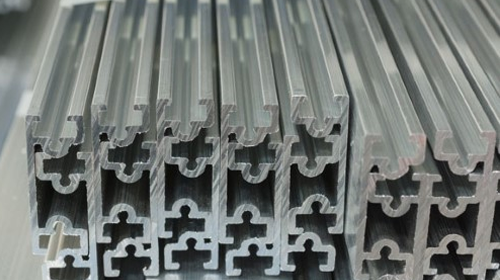

On July 20, the Aluminium Extruders Council (AEC) attested to a U.S. International Trade Commission (USITC) hearing about the economic effects of Section 232 and 301 tariffs on U.S. industries. The president of AEC, Jeff Henderson, was very vocal in claiming that the domestic aluminium extruders are being put under the guillotine by the recent predicament.

Jeff Henderson openly went on record saying: “Despite some initial relief for the domestic extrusion industry from the Aluminum Section 232 tariffs for imported aluminium extrusions, the structure of the exclusions process later developed by the U.S. Department of Commerce, including the adoption of General Approved Exclusions (GAE) that do not require product-specific objections, has effectively gutted any relief for U.S. extruders from imports of extrusions the Aluminum 232 initially provided.”
He further exemplified that the local industry would be at a ‘severe disadvantage’ compared to untamed imported extrusions, owing to augmented costs of primary raw material in Section 232 tariffs.
“The share of the U.S. market has shrunk from 80% to 75% since the 232 aluminium extrusion tariffs were revoked, which translates to 300 million pounds of extrusions or the equivalent of eight extrusion plants, or 2,000 direct jobs,” Henderson said in support of his argument.
AEC is now supporting the cause for an ‘immediate restructuring’ of the 232 aluminium extrusion tariffs system in commerce, focusing on the exclusion of GAE admissible on imported extrusions. Henderson perceives that without any concrete change, section 232 ‘utterly fails to protect domestic extruders from foreign manufacturers.’
“The structure of the existing Aluminum 232 exclusion process does not reflect the commercial realities of demand and production in the U.S. aluminium extrusion market. As a practical matter, this structure effectively renders it impossible for U.S. extruders to object to exclusion requests and effectively negates any benefits we should be receiving due to the Aluminum 232,” he added to strengthen his narrative.
At this moment, the impending matter at hand for AEC or Henderson is that there are 5 million extrusion shapes in production, each with a classic design. To gain those shapes, the U.S. extruders had to undergo a process of rigorous trials and errors to procure the tools required for a specialised job, and now their systems are set. But that does not surmount that they would be late in delivering desired orders in a stipulated time.
AEC commented: “As a result, the structure of the current exclusion process effectively renders it impossible for U.S. extruders to object to almost any exclusion request. Consequently, commerce created a situation where U.S. extruders could not object to extrusion exclusion requests, thereby justifying commerce’s implementation of the GAE.”
The GAEs technically look over the entire aluminium extrusions sector, according to the AEC and the council rested their case, saying that the scope of aluminium extrusions “rests solely on a fatally flawed presumption embedded in the exclusion process.”
AEC also denotes that China’s ‘overcapacity’ and ‘evasion’ of the antidumping and countervailing duty orders enormously contribute to the growth of foreign competition. The council added that Midwest premiums have skyrocketed since 232 tariffs were implemented and that the aluminium process and billet premiums saw high prices in the U.S. in 2022.
“Unfair foreign competition is benefiting from cheaper aluminium inputs and blanket tariff exclusions in the form of GAEs – essentially negating the intent of the A.D. and CVD orders and the Aluminum 232 tariffs to protect the critical U.S. aluminium extrusion industry,” Henderson concluded.
Responses








